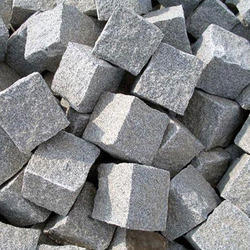
The following are important building stone, their composition, properties and uses:
1. Granite:
 It is an igneous rock. It is mainly composed of quartz, felspar and mica. Its specific gravity is 2.64 and compressive strength varies from 70 to 130 MN/m2. Its colour depends upon that of felspar which may be brown, grey, green and pink. A fine grained granite offers high resistance to weathering. It can be easily polished and worked. It is used for exterior facing of buildings.
It is an igneous rock. It is mainly composed of quartz, felspar and mica. Its specific gravity is 2.64 and compressive strength varies from 70 to 130 MN/m2. Its colour depends upon that of felspar which may be brown, grey, green and pink. A fine grained granite offers high resistance to weathering. It can be easily polished and worked. It is used for exterior facing of buildings.
2. Slate:
 It is an argillaceous rock. It is mainly composed of alumina mixed with sand or carbonate of lime. Its specific gravity is 2.8 and compressive strength varies from 60 to 70 MN/m2. It has grey or dark blue colour. A good slate is hard, tough and fine grained. It is suitable for use in cistern. The slate in the form of tiles is used as an excellent roof covering material.
It is an argillaceous rock. It is mainly composed of alumina mixed with sand or carbonate of lime. Its specific gravity is 2.8 and compressive strength varies from 60 to 70 MN/m2. It has grey or dark blue colour. A good slate is hard, tough and fine grained. It is suitable for use in cistern. The slate in the form of tiles is used as an excellent roof covering material.
3. Gneiss:
4. Sandstone:
 It is a sedimentary rock of silicious variety. It is mainly composed of quartz, lime and silica. Its specific gravity is 2.65 to 2.95 and compressive strength varies from 35 to 40 MN/m2. Its usual colours are white, grey, brown, pink etc. The fine grained stones are strong and durable. It is suitable for ashlar work, mouldings, carving etc.
It is a sedimentary rock of silicious variety. It is mainly composed of quartz, lime and silica. Its specific gravity is 2.65 to 2.95 and compressive strength varies from 35 to 40 MN/m2. Its usual colours are white, grey, brown, pink etc. The fine grained stones are strong and durable. It is suitable for ashlar work, mouldings, carving etc.
5. Limestone:
6. Marble:
7. Kankar:
It is very impure lime stone containing 30% of alumina and silica. The hard kankar is used for foundations of buildings.
8. Laterite:
9. Moorum:
10. Quartzite:
It is a silicious sand stone which has been subjected to metamorphic action. It is strong and durable. It is used as a road metal or railway ballast or in concrete.







